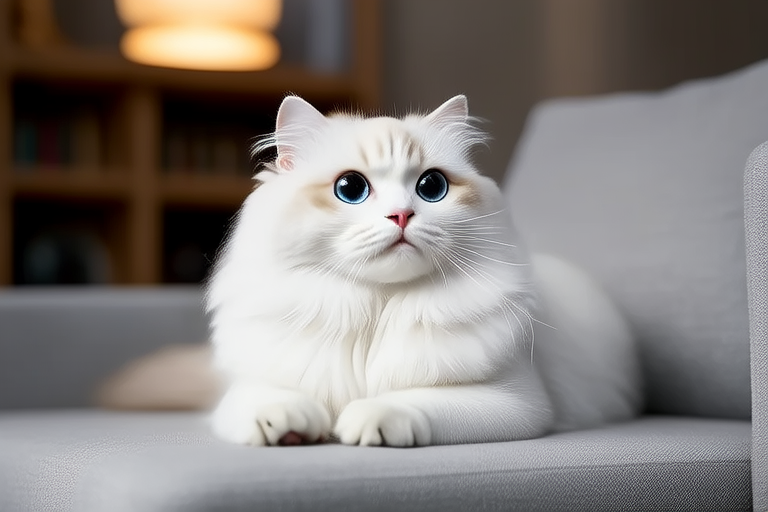Discover the Softest, Most Affectionate Companion: The Ragdoll
The world of cat breeds is vast and varied, but there’s one breed that stands out for its unparalleled softness and affectionate nature – the Ragdoll. Known for their silky fur and docile demeanor, Ragdolls have captured the hearts of many pet lovers around the globe. In this article, we will explore the unique traits of Ragdolls, delve into their history, discuss their ideal living conditions, and provide essential care tips for prospective owners.
The Unique Traits of Ragdolls
Ragdolls are famous for their soft, plush coats and gentle dispositions. Their name comes from their tendency to go limp when held, much like a rag doll. This trait, combined with their calm and affectionate nature, makes them excellent companions for families and individuals alike. Ragdolls are known for their loyalty; they often follow their owners around the house and enjoy being close to them.
In terms of appearance, Ragdolls have a medium to large build with a semi-longhair coat that requires regular grooming. They come in various colors and patterns, including seal, chocolate, blue, lilac, red, and cream, with points on their ears, face, paws, and tail. Their eyes are strikingly blue, adding to their overall appeal.
Temperament and Ideal Living Conditions
Ragdolls are incredibly social cats that thrive in environments where they can interact with their human companions. They are generally patient and tolerant, making them suitable for households with children and other pets. However, due to their docile nature, they may not be the best choice for homes with very young children who might unintentionally mishandle them.
These cats are adaptable and can adjust well to different living conditions, but they do prefer a quiet, peaceful environment. They are not overly active and enjoy lounging around, making them perfect for apartment living. Providing them with comfortable resting spots, such as soft beds or blankets, will ensure they feel at home.
Common Health Issues
Like all breeds, Ragdolls are prone to certain health issues. One of the most significant concerns is Hypertrophic Cardiomyopathy (HCM), a heart condition that affects many purebred cats. Regular veterinary check-ups and early detection can help manage this condition effectively. Other potential health problems include Polycystic Kidney Disease (PKD) and Hip Dysplasia. It’s crucial for owners to be aware of these issues and work closely with their veterinarian to maintain their Ragdoll’s health.
The History of Ragdolls
The story of the Ragdoll begins in the 1960s when Ann Baker, a breeder in Riverside, California, developed the breed. She crossbred several domestic longhair cats, eventually creating a cat with the distinctive traits that define the Ragdoll today. Despite initial skepticism, the breed gained popularity, and today, Ragdolls are cherished by cat enthusiasts worldwide.
Their gentle nature and striking appearance made them an instant hit. As word spread about the unique qualities of these cats, more and more people began to seek them out as companions. Today, Ragdolls are recognized by major cat registries and continue to grow in popularity.
Caring for Your Ragdoll
Proper care is essential for ensuring your Ragdoll leads a healthy and happy life. Here are some tips to help you care for your feline friend:
Dietary Needs
Ragdolls require a balanced diet rich in proteins, fats, and carbohydrates. High-quality commercial cat foods or a homemade diet formulated by a veterinarian can meet their nutritional needs. Avoid feeding them table scraps or human food, as these can lead to obesity and other health issues. Fresh water should always be available to keep them hydrated.
Grooming
Ragdolls have semi-longhair coats that need regular grooming to prevent matting and hairballs. Brushing them twice a week with a slicker brush will help remove loose hair and distribute natural oils throughout their coat. Bathing is usually unnecessary unless they get particularly dirty. Additionally, regular nail trimming and dental care are important aspects of their grooming routine.
Exercise Routines
Although Ragdolls are not overly active, they still need opportunities to play and stay fit. Interactive toys, such as laser pointers or feather wands, can stimulate their minds and bodies. Providing climbing structures or shelves will allow them to explore their surroundings and satisfy their natural curiosity. Encouraging playtime daily will help keep them physically and mentally engaged.
Personal Stories from Ragdoll Owners
To truly understand the joy of owning a Ragdoll, it’s helpful to hear from those who share their lives with these wonderful cats. Here are a few testimonials from current Ragdoll owners:
“Our Ragdoll, Luna, has brought so much warmth and comfort into our home. She follows us everywhere and loves to be cuddled. Her soft fur and gentle personality make her the perfect companion for both my husband and me.”
“We adopted a Ragdoll kitten last year, and she has become the center of our family. She’s incredibly affectionate and loves to play with our children. We’ve never had a cat that was so patient and gentle with our kids.”
“I’ve always been a dog person, but after getting a Ragdoll, I realized just how much I was missing out on. These cats are so loyal and attentive. They really are like little furry friends that bring endless joy.”
Conclusion
The Ragdoll is a unique and wonderful addition to any family. With their soft, affectionate nature, they offer companionship and love that can enrich your life. By understanding their needs and providing proper care, you can ensure that your Ragdoll thrives and brings joy to your household. Whether you’re a seasoned cat owner or considering adopting your first feline friend, the Ragdoll is sure to win your heart.
